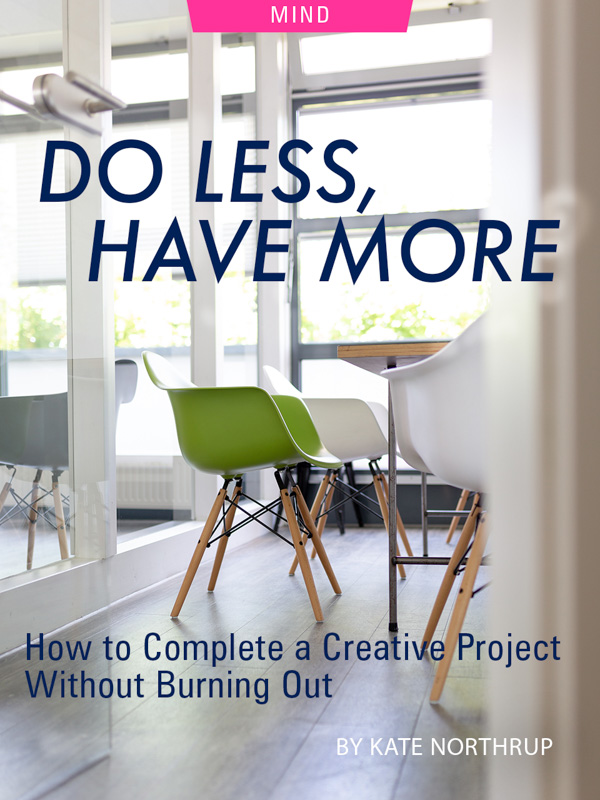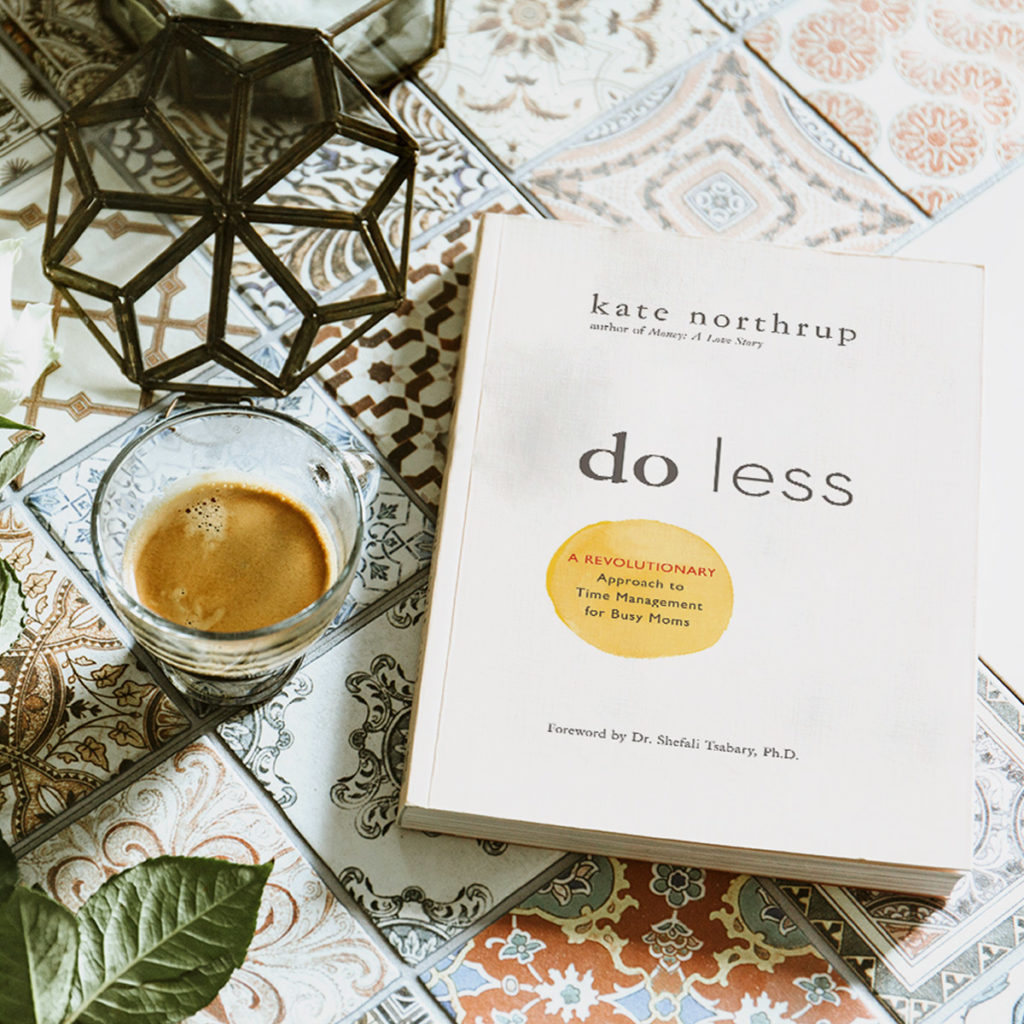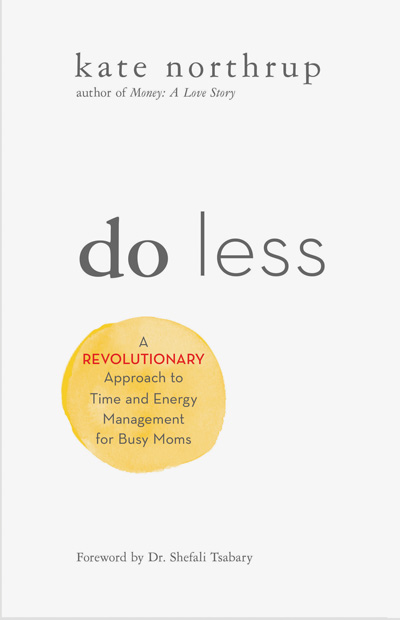
Doing less is the new creative clarity: a refreshingly candid take on motherhood, entrepreneurship and having it all (it’s possible!)
—
I was very quickly nearing the end of the second trimester of my second pregnancy when I finally got my butt in the chair to write my second book. There’s nothing like the looming dual deadlines of a book contract and a birth to get one’s rear in gear.
When we look at someone who has a lot going on, like kids and a business or a job with a lot of different moving parts, we like to ask them, “How do you do it all?”
[Spoiler alert] My answer to this question is always simple: “I don’t.”
When it came to writing my second book, Do Less: A Revolutionary Approach to Time and Energy Management for Busy Moms, the premise of the book had to guide its creation. The whole thing would have lacked integrity if it hadn’t.

We each have a unique creative rhythm, so the first thing we need to do when saddling up on any creative endeavor is identify our rhythm and honor it.
Here’s what mine looks like: Get the book idea, write the outline, write the sample chapters, submit to publisher, sign contract, appear as though I’m doing nothing for about 10 months, and write the book in the last 1-2 months before the deadline.
The most important part of this process is the part where it looks like I’m doing nothing. This creative gestation period is critical for me. I know that it’s a critical part of the work, even though, technically speaking, nothing is produced during this time.
I’ve learned to trust my long pause before I actually start. Rather than beat myself up for it, I embrace it and allow it to be. When I finally sit down to write, I know that the 9-10 months marinating were well spent because the words have a flavor they wouldn’t have had if I’d skipped the pause.
Next, if we want to get anything out into the world, we have to pull back on other areas of our life. We simply cannot do it all at the same time, so something’s gotta give.
If you want to get something done, like a book, decide what else can take a back seat. Can you minimize other projects at work? Can you cut out your evening TV? Can you wake up one hour earlier or ask your mother in-law to watch your kids on Saturdays? You have to claim the time from somewhere because it won’t happen by itself.
I knew I had 2 months to get the book done and there was very little wiggle room there, given the fact that I was also going to give birth soon after that.
We didn’t do any major promotions in our company while I was writing the book, and I spent 3 days at a hotel completely by myself so I could cross the finish line. I got a lot of help with my daughter, I didn’t try to win any awards with an impressively organized home, and I got takeout — a lot.
Whether you’re working on a film, a novel, an essay, getting a blog up and running, or curating an Instagram feed, here are some other tips for getting your creative project off the ground by doing less:
1. Pay yourself first with your time
Figure out when you’re the most focused or feel the most creative during the day and see if you can schedule time to work on your project during those hours. I find I’m my most focused and inspired in the morning, so I don’t schedule meetings before 12pm and instead I devote the morning to the projects that matter the most to me.
2. Set boundaries
I committed to working a minimum of one hour a day on my book. Everyone in my household knew that was happening, 7 days a week. I requested that no one bother me during that time and I put my phone on airplane mode, closed all of my apps, shut my door, and got to work.
Often the hardest boundaries to set are with ourselves.
Do whatever it takes to get the space you need to show up for yourself and your creativity. The boundaries with yourself and others are so worth it.
3. Show up
A lot of getting a project done is simply logging hours with your butt in your chair doing the work. I ended up throwing away entire chapters that were just kind of sucky. But writing those chapters made way for the not-sucky ones that came right after them. I don’t believe there’s any such thing as wasted output. It’s all part of the process and if you just keep showing up, you’ll get to the good stuff eventually.
4. Make it fun
To hold myself accountable, I recorded an Instagram story before and after each writing session to update my community on my word count. I had a total number of words in my contract, and each day I got closer and closer to my goal. I used this ‘nerdy glasses’ filter to report in, and it made the whole process much more fun. Plus it ensured that I didn’t take myself too seriously, which, at least for me, ensures that I stay in creative flow. You could have a ritual around a favorite beverage, some dark chocolate, or a dance break to begin or end your work time. Whatever you need to do to make it fun and feel good will be time and energy well spent!
Creative projects do not start and finish themselves.
In order to devote a part of ourselves to doing work we’re meant to do, we need to dial back in certain areas and set boundaries so we can claim the space, time, and energy for the work. Find your rhythm. Decide which areas of your life you can let slide a little bit while you get your project done. Schedule time at your optimal hours if possible. Set boundaries. Keep showing up and make it fun.
Before you know it, your project will be done and you won’t have burned yourself out in the process. Hallelujah!
You may also enjoy reading Love The Work You’re With: The ‘Genius Habit’ that Will Shift Your Relationship Forever by Laura Garnett
